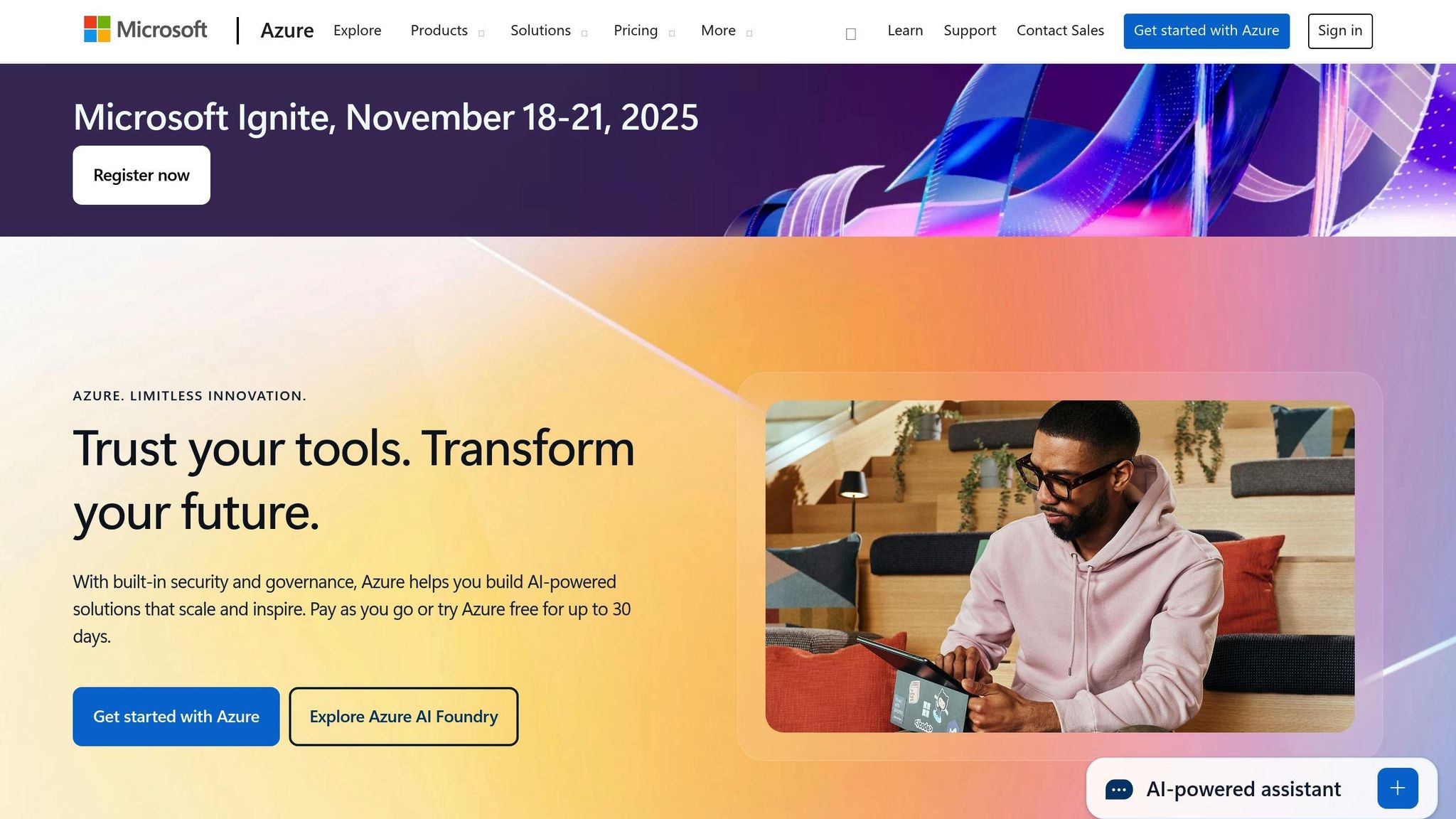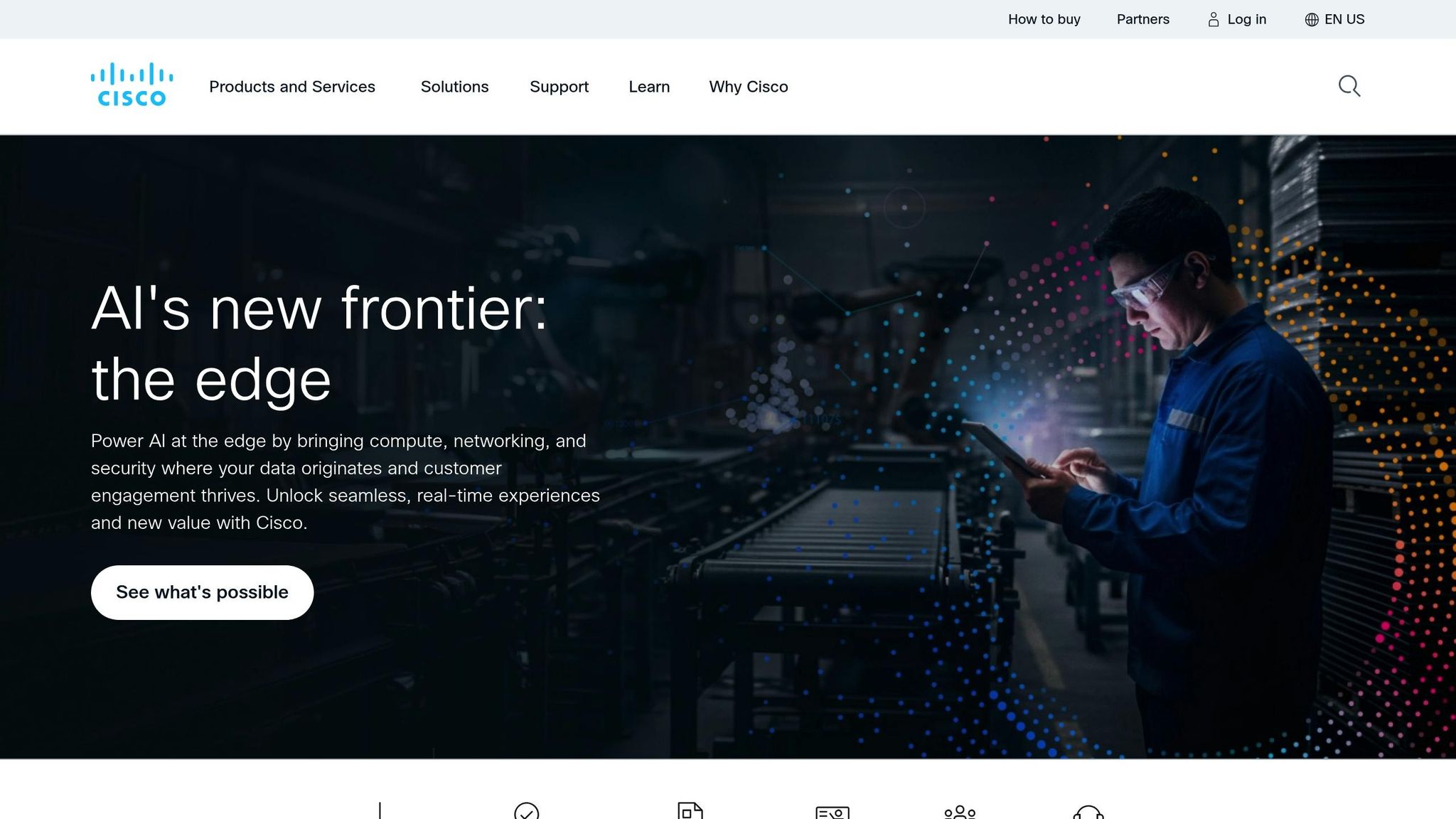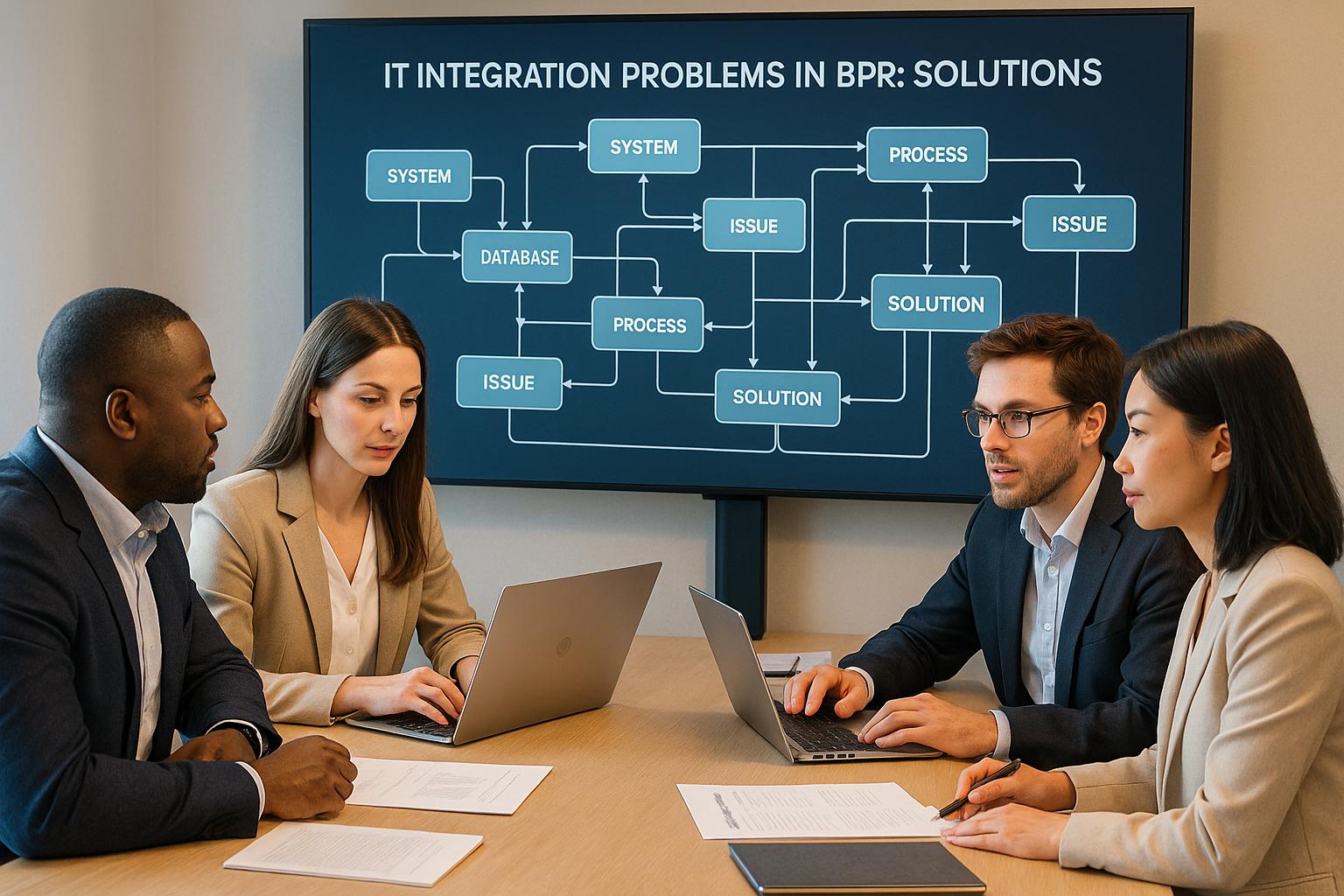In 2025, cloud systems are essential for businesses, but their reliance comes with risks. Cyberattacks targeting cloud infrastructure can cause billions in damages. Recent examples, like the MOVEit breach in 2023 (93.3 million individuals impacted) and Google Cloud's record-breaking DDoS attack (398 million requests per second), show how quickly incidents can escalate. These events highlight the need for tailored response strategies.
Key challenges include:
- Limited visibility: Cloud providers control access to certain data, complicating investigations.
- Dynamic infrastructure: Attackers can quickly alter or delete evidence in cloud environments.
- Complex access management: Federated authentication and permissions make tracing breaches difficult.
Learning from incidents like the Cisco voice phishing attack (2022) and the MOVEit vulnerability exploitation (2023) shows the importance of:
- Timely patch management
- Employee training on phishing and social engineering
- Using advanced detection tools like AWS GuardDuty or Microsoft Sentinel
Organizations must combine automated tools with well-practiced response plans to minimize damage, ensure business continuity, and adapt to evolving threats. Partnering with cybersecurity experts can provide critical support during crises.
Cloud Incident Response in Microsoft Azure

Case Study 1: Google Cloud DDoS Attack (October 2023)

In October 2023, Google Cloud was targeted by a massive and highly sophisticated DDoS attack. This event highlighted a growing trend in advanced protocol-level attacks that push the boundaries of traditional DDoS defenses.
Attack Details and Scale
The attack reached an astonishing peak of 398 million requests per second (RPS). The attackers relied on a zero-day vulnerability in the HTTP/2 protocol, using a method known as "Rapid Reset." This technique exploited HTTP/2's stream multiplexing feature by repeatedly opening and closing streams, which overwhelmed servers and bypassed rate-limiting mechanisms. The approach was groundbreaking, showcasing a new evolution in DDoS tactics by generating enormous traffic volumes from relatively few sources.
Google's infrastructure endured a highly coordinated effort designed to disrupt its entire cloud platform. Despite the unprecedented scale of the attack, Google's quick response and advanced security measures managed to prevent major service outages. This incident not only set new records for attack sophistication but also redefined the requirements for effective DDoS defense strategies.
Lessons from the Attack
The Google Cloud attack revealed critical weaknesses in conventional DDoS defenses. Traditional volumetric protections were insufficient against this type of protocol-level exploitation, emphasizing the need for enhanced monitoring systems capable of detecting unusual behaviors, like irregular HTTP/2 stream activity. Automated detection tools and updated response plans are now essential in addressing these emerging threats.
Additionally, the incident underscored the ripple effect such an attack can have. A successful assault on a major cloud provider risks widespread disruptions for the organizations relying on its services. This serves as a stark reminder that even the most prepared companies are vulnerable to advanced cyber threats. Partnering with specialized security firms, such as those featured in the Top Consulting Firms Directory, can strengthen incident response capabilities and ensure organizations are better prepared for future challenges.
Case Study 2: Cisco Voice Phishing and Ransomware Incident (May 2022)

In May 2022, Cisco faced a major cyberattack that exploited human vulnerabilities. The Yanluowang ransomware group carried out a calculated voice phishing (vishing) attack, leading to an extortion scheme involving the public release of sensitive files.
How the Attack Happened
This attack unfolded in several stages, each taking advantage of human and technical weaknesses. The attackers used vishing to gain access to an employee's Google account and then leveraged synchronized credentials to navigate through Cisco's systems. Unlike phishing emails, voice-based attacks create a sense of urgency, prompting employees to bypass standard security checks.
After gaining access, the attackers leaked sensitive Cisco files to pressure the company into compliance. This case highlights how ransomware groups now use a combination of social engineering and public exposure tactics, moving beyond just encrypting files.
Steps to Prevent Credential-Based Attacks
The Cisco incident exposed key security gaps, offering lessons for other organizations. While multi-factor authentication (MFA) is a crucial defense, it needs to address vulnerabilities like MFA fatigue attacks, where attackers repeatedly send prompts until users approve access out of frustration.
To strengthen defenses, companies should implement strict verification protocols for credential changes or access requests. Employees should be trained to independently confirm caller identities - such as by returning calls to verified company numbers - instead of relying on incoming calls.
Credential synchronization, while convenient, can amplify the damage caused by a single compromised account. Regularly auditing synchronized credentials and limiting their use for accounts with sensitive access can reduce risks.
Employee training must also cover voice-based social engineering. Training programs should teach employees to spot manipulation tactics, understand that legitimate IT staff will never ask for passwords or MFA codes over the phone, and report any suspicious calls immediately.
On the technical side, tools like browser isolation and endpoint detection and response (EDR) can help detect unusual credential usage patterns, such as multiple failed login attempts, logins from unfamiliar locations, or other suspicious behaviors.
This incident also underscores the value of adopting zero-trust security principles. Zero-trust requires continuous verification of both user identity and device security, regardless of whether access requests come from inside or outside the organization. This ensures that every access attempt is treated with caution and thoroughly validated. These measures emphasize the importance of having a strong incident response strategy, especially in cloud-based environments.
Finally, organizations may benefit from working with specialized security consulting firms to enhance their incident response plans. Resources like the Top Consulting Firms Directory can connect businesses with experts in cybersecurity and incident response planning, helping them prepare for and respond to sophisticated attacks like the one Cisco faced.
sbb-itb-97f6a47
Case Study 3: Clop and MOVEit Vulnerability Exploitation (May 2023)
In May 2023, the Clop ransomware group took advantage of a zero-day vulnerability - CVE-2023-34362 - in MOVEit Transfer software. This SQL injection flaw allowed attackers to run malicious code and steal sensitive data from organizations worldwide. It was a stark example of how swiftly cybercriminals can exploit vulnerabilities and target weaknesses in supply chains.
Attack Impact and Scope
This breach had a massive reach, affecting over 2,500 organizations globally and compromising the personal data of about 93.3 million individuals. Victims came from both the public and private sectors, including prominent names like British Airways, Amazon, Shell, and the New York City Department of Education. The stolen data included names, addresses, Social Security numbers, and financial records, significantly raising the risk of identity theft and fraud. The Clop group openly claimed responsibility, using extortion tactics to pressure victims into paying ransoms by threatening to release the stolen data.
Why Patch Management Matters
The MOVEit breach underscored the critical role of timely patch management, especially in cloud environments. As a zero-day exploit, there was no early warning for affected organizations before the attacks began. Once Progress Software, the company behind MOVEit, released patches and updates, the window for preventing further damage closed quickly. Organizations with strong patch management practices were able to act swiftly, addressing the vulnerability and reducing their exposure.
Automated tools for deploying patches and continuous vulnerability scanning played a key role in limiting the damage. Regular security audits and penetration testing helped organizations stay prepared, while collaboration with cloud service providers ensured they were informed about new threats and updates.
The incident also highlighted the importance of having well-prepared incident response plans tailored for cloud environments. Organizations with clear roles, established partnerships with cybersecurity professionals, and practiced procedures were better equipped to handle the crisis. They could quickly identify compromised systems, apply emergency patches, disable vulnerable servers, and communicate effectively with stakeholders.
For organizations dealing with complex cloud security incidents, turning to specialized consulting firms can be invaluable. Resources like the Top Consulting Firms Directory can help businesses connect with experts in cloud security, incident response, and vulnerability management - offering much-needed support during critical situations.
The MOVEit breach was a clear reminder that in cloud environments, the speed of response often determines the scale of the damage. Organizations with mature patch management systems and detailed incident response plans were able to limit the fallout, while those lacking these measures faced far greater challenges. This case reinforced the importance of rapid action and thorough preparation in minimizing the impact of cloud-based security incidents.
Cloud Incident Response Tools and Frameworks
Building on earlier examples of real-world incidents, modern cloud defenses have evolved to combine AI-driven tools with strategic response plans. The complexity and speed of today’s threats demand solutions that go beyond traditional manual monitoring. Automated, AI-powered tools now play a key role in managing these challenges, offering faster and more effective incident responses.
Cloud Security Platforms
Microsoft Azure Sentinel is a cloud-native SIEM platform designed to handle large-scale data analysis across an organization’s digital environment. By leveraging machine learning, it correlates events from multiple sources, reduces false positives, and activates automated responses through customizable playbooks. For instance, it can isolate compromised systems or block suspicious IP addresses in seconds.
AWS GuardDuty specializes in continuous monitoring and threat detection, tailored for cloud-native environments. It analyzes data like DNS logs, VPC flow logs, and CloudTrail events using machine learning models trained on vast security datasets. This enables it to detect unusual behaviors, such as cryptocurrency mining, data exfiltration, or communications with malicious domains. GuardDuty integrates seamlessly with other AWS services, enabling actions like quarantining compromised instances or revoking credentials.
Google Chronicle brings Google’s expertise in large-scale data analysis to enterprise security. It processes and analyzes massive amounts of security telemetry data, making it a valuable tool for large organizations with complex cloud setups. Chronicle’s machine learning capabilities have proven effective, such as during Google’s efforts to mitigate DDoS attacks, where it successfully contained threats before they caused significant disruptions.
| Platform | Key Strengths | AI/ML Capabilities | Best Use Cases |
|---|---|---|---|
| Microsoft Azure Sentinel | Cross-platform integration, customizable playbooks | Advanced correlation, false positive reduction | Large enterprise SOCs, hybrid environments |
| AWS GuardDuty | Cloud-native design, seamless AWS integration | Behavioral analysis, anomaly detection | AWS-focused deployments, automated response |
| Google Chronicle | Large-scale processing, threat hunting | Pattern recognition, predictive analysis | Large-scale environments, DDoS protection |
The impact of these tools is clear when considering their effect on response times. Organizations using machine learning-powered platforms can cut detection and containment times by up to 70% compared to manual methods. This speed is critical, especially when you consider that the average cost of a data breach in the U.S. reached $9.48 million in 2025, with cloud-related breaches accounting for a significant portion of these losses.
Creating Effective Response Plans
While these platforms enhance detection and containment, a successful response also requires thorough planning and continuous testing. Developing effective incident response plans involves more than just selecting tools - it requires a structured, ongoing approach to preparation and refinement. Organizations often create scenario-specific playbooks to address various cloud threats, such as ransomware, credential theft, or supply chain attacks.
Regular testing, including tabletop exercises and red team simulations, is essential for identifying weaknesses before a real incident occurs. For example, an exercise might simulate a phishing attack, similar to the voice phishing techniques discussed earlier. These drills allow security teams to fine-tune their responses and improve coordination across departments.
Automated attack simulations offer another way to ensure readiness. By running controlled tests, organizations can validate their detection and response procedures, making sure they stay effective as cloud environments change.
Keeping response plans updated is equally important. The Clop ransomware group’s exploitation of the MOVEit vulnerability in May 2023 highlighted how quickly new threats can arise and spread across organizations. To stay prepared, response plans must adapt to emerging risks, incorporating lessons from recent incidents and adjusting to new cloud services and configurations.
Organizations should also establish clear escalation paths and communication protocols tailored to the unique challenges of cloud environments. Security events in the cloud often require coordination with multiple service providers, cloud vendors, and internal teams. Rapid decisions about isolating compromised resources can have wide-ranging effects on business operations, especially for organizations operating across different regions.
For companies that lack in-house expertise, partnering with specialized consulting firms can provide critical support. Resources like The Top Consulting Firms Directory can help businesses find experts in cloud security, incident response, and compliance. These firms can assist in developing tailored response plans suited to an organization’s specific cloud architecture and risk profile.
Ultimately, successful cloud incident response relies on a balance between advanced automated tools and well-practiced human intervention. While AI-driven platforms can handle detection and containment, human expertise remains vital for complex decision-making, effective communication, and post-incident analysis to prevent future breaches.
Key Lessons for Cloud Incident Response Planning
When it comes to managing cloud incidents, there are three essential pillars: prevention, detection, and recovery. Real-world examples show that focusing on these areas can significantly improve how organizations handle threats and disruptions.
Prevention and Preparation
Staying ahead of vulnerabilities is critical. Take the Clop MOVEit attack from May 2023, for instance. A single unpatched vulnerability spiraled into a massive breach, impacting multiple companies. Timely patching could have prevented this outcome, underscoring the importance of proactive vulnerability management.
Human error is another common weak spot. In the Cisco voice phishing case from May 2022, attackers exploited a lapse in judgment to gain access. Regular employee training, including phishing simulations and security awareness programs, can drastically lower the chances of such breaches.
Misconfigurations are another frequent culprit. The Capital One AWS S3 bucket breach, along with similar incidents at Microsoft and Facebook, exposed millions of records due to preventable errors. Regular security audits, automated configuration checks, and least-privilege access controls can help organizations identify and address these weaknesses before attackers can exploit them.
Additionally, organizations should maintain response playbooks tailored to specific threats like ransomware or phishing. These playbooks should be updated regularly to incorporate new insights and lessons learned from past incidents.
Using Advanced Detection Tools
The scale and complexity of modern attacks demand cutting-edge detection capabilities. Consider the Google Cloud DDoS attack in October 2023, which reached a staggering 398 million requests per second. Traditional monitoring methods simply can’t keep up with threats of this magnitude.
AI-driven tools and machine learning platforms are now essential for rapid detection and containment, especially given the increasing frequency of incidents. These tools can analyze large volumes of activity in real time, flagging anomalies like unusual traffic patterns or unauthorized privilege escalations before they escalate into major problems.
Integrating cloud-native tools with existing platforms via APIs and automated alert systems ensures security teams receive actionable insights rather than an overwhelming flood of raw data. However, it’s crucial to select tools that enhance, rather than complicate, your current security setup. Regularly testing and fine-tuning detection rules can help maintain their effectiveness while reducing false alarms.
While advanced detection tools can limit the impact of an attack, recovery measures are what truly ensure business continuity.
Recovery and Business Continuity
To minimize downtime, organizations must rely on automated cloud backups, redundant systems, and well-tested disaster recovery plans. These measures enable rapid restoration of services and data, keeping disruptions to a minimum.
Swift containment and thorough forensic analysis are equally important. These steps not only protect sensitive data but also help organizations understand the full scope of the incident.
For businesses lacking in-house expertise, external support can be invaluable. Partnering with consulting firms specializing in cloud security and incident response provides access to round-the-clock assistance and technical expertise. Resources like The Top Consulting Firms Directory can connect organizations with trusted advisors who can guide them through critical moments.
Finally, measuring the success of your response is key. Metrics like Mean Time to Detect (MTTD), Mean Time to Respond (MTTR), and recovery rates offer valuable insights into your preparedness. Regular drills and plan reviews ensure your strategies remain effective and up to date.
FAQs
What steps can organizations take to strengthen their defenses against advanced DDoS attacks, like those seen in high-profile cloud incidents?
Organizations can strengthen their protection against complex DDoS attacks by combining forward-thinking strategies with reliable cloud-based tools. One key step is using scalable cloud infrastructure that can handle sudden surges in traffic without affecting system performance. Pair this with advanced threat detection tools powered by AI and machine learning, which can spot and tackle unusual traffic patterns as they happen.
It's also essential to keep your incident response plan up to date. Train your team to respond swiftly during an attack, and regularly test your protocols through realistic simulations. Collaborating with consulting firms that focus on cloud security can bring in valuable expertise, helping you refine your defenses and stay prepared for evolving threats.
How can businesses prevent and respond effectively to credential-based attacks like the Cisco voice phishing incident?
Credential-based attacks, like the Cisco voice phishing incident, serve as a stark reminder of why businesses need strong security measures and a solid incident response plan. To reduce the risk of such attacks, companies should adopt multi-factor authentication (MFA), require regular password updates, and train employees to recognize phishing attempts. Keeping an eye on unusual login activity and leveraging advanced threat detection tools can also help catch potential breaches early.
When an attack happens, quick action is essential. Begin by isolating the impacted systems, resetting compromised credentials, and conducting a detailed investigation to determine the extent of the breach. A well-prepared incident response plan ensures teams can respond efficiently and effectively. Regularly revisiting and testing this plan is critical to staying ready for future security challenges.
Why is timely patch management essential in cloud environments, and how can organizations strengthen their processes to prevent vulnerabilities like MOVEit breaches?
Timely patch management plays a key role in maintaining security within cloud environments. Without it, vulnerabilities - like the MOVEit flaw - can become entry points for attackers. Since cloud systems often store sensitive data and are accessible from anywhere in the world, they are particularly attractive to cybercriminals. A delay in applying patches can expose organizations to breaches, data theft, and even compliance violations.
To tackle this, organizations should consider using automated patching tools to streamline the process. Keeping a close eye on vendor updates and setting up clear protocols for prioritizing and applying critical patches can also make a big difference. On top of that, regular vulnerability assessments can pinpoint potential risks, giving teams the chance to address them before they turn into security incidents.


